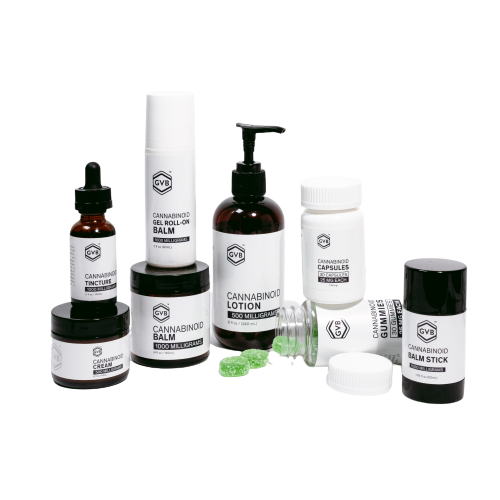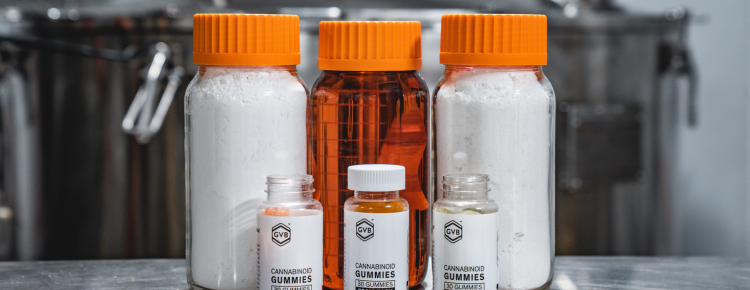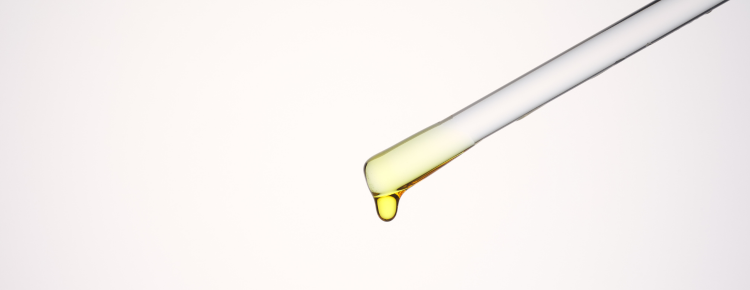Depending on the situation, using cannabinoids topically can be the most effective and desirable solution. Even so, cannabinoid-infused topicals have traditionally been slower-growing compared to long-trending categories like CBD tinctures and gummies.
The latest data compiled by Statista, however, suggest that the topical tide is turning. A greater number of younger people are turning to cannabinoid topicals and skincare products, and insights from a mature market can now help us understand the main holdups currently hindering the growth of this category.
By solving the problems that people currently have with CBD topicals, your products will deliver the genuine value that shoppers are seeking. In this guide, find out who to market cannabinoid topicals toward and how to formulate your products to fit average hemp consumer needs.
Who uses hemp topicals and skincare products?
We’ll start by examining the available data regarding who currently uses or is interested in using cannabinoid skincare products: both their age and gender. Understanding your target demographic is a key step in developing a cannabinoid topical product that will succeed in 2023 and beyond. Let’s begin by taking a look at the likelihood a person uses CBD topicals based on their age:
Hemp topical use by generation
Between April 9th and 11th, 2021, Statista conducted a survey¹ of more than 30,000 Americans regarding their interest in CBD beauty and personal care products. The respondents were divided by age, and their chosen responses roughly fell in line with age-based demographic breakdowns of the CBD industry overall.
Interest in CBD topicals among Baby Boomers and older generations was comparatively low. It also appears that the youngest Americans, those comprising Generation Z, have not yet fully embraced the offerings available on the CBD topical market. At only 12%, Gen Z respondents showed dramatically reduced interest in CBD topicals compared to Millennial (21%) and Gen X (23%) respondents.
Many members of Generation Z are still too young to use CBD products. Among those who are already 18-21, it’s likely that CBD topicals have simply not been presented attractively to this age group. Usually branded as helping with ailments concomitant with age, CBD topicals do not immediately track with the needs of the nation’s youngest consumers, a situation that can easily be rectified with proper branding and marketing.
Messaging that supports CBD topicals is clearly getting through to individuals old enough to experience age-related woes, yet the oldest among us remain relatively naive of cannabinoid topicals and their reported benefits. It may, then, be wise to determine ways to position Millennial and Gen X CBD topical users as ambassadors who relate the benefits of this product category to both older and younger friends, family members, coworkers, and neighbors.
Hemp topical use by gender
Unsurprisingly, interest in “CBD beauty and personal care products” remains significantly skewed toward women, though perhaps using “beauty” in the name Statista chose for its 2021 survey on the subject² suppressed male response. This survey, which used the same pool of 30,000+ participants mentioned in the previous section, found that 24% of American women were interested in buying CBD topical body products compared to only 16% of men. At 10%, even fewer men were interested in CBD bath products.
As societal norms related to gender continue to evolve, it would be unwise to assume that the market for CBD topical products will be limited to individuals who identify as female. With an increasing number of men also seeking alternative options for health and personal care, there is potential for CBD topicals to be embraced by a diverse range of consumers, including those who identify as male.
In any case, all individuals could use a bit of coaching when it comes to the benefits of cannabinoid topicals. Only a quarter of women are even interested in CBD topicals, which goes to show they simply aren’t aware of the immense benefits and minimal risks this cannabinoid can offer when applied topically. The work of expressing the value of hemp topicals to both men and women is far from over, and it would also be prudent to recognize that the difference between the two genders is currently on the wane.
Why do people want to use cannabinoid topicals?
It’s one thing to know who uses a product you intend to sell, but it’s another to understand the motivations that drive users of your product. When you know not only who your market is but also what motivates them, you can discover ways your brand might be able to reach additional groups of consumers who might share similar motivations.
For insights into the reasons consumers use CBD topicals, we turn to a third Statista survey³, this time from 2022. Featuring a much smaller pool of only 622 respondents aged between 21 and 65 years, this survey zeroed in on the primary motivations driving individuals who have already chosen to use CBD topicals.
Thirty-five percent of respondents cited reduction of inflammation as their main reason for trying CBD topicals, meaning that this single motivation drives more than a third of the current cannabinoid topical market. Given the general reputation CBD has received as an anti-inflammatory, it’s unsurprising that so many people are turning to this cannabinoid for its potential help with inflammation. It’s also no secret at this point that applying CBD topically usually allows more cannabinoids to reach the affected area more quickly.
Coming in second place as the most-reported motivation for buying CBD topicals was the urging of friends or family members. Though hardly anyone knew what it was a decade ago, CBD has long since become a household name, making it nearly as common to recommend to people you know who are in pain as Aspirin or ibuprofen.
CBD has also taken hold in the natural health community due to its natural origin and apparently very limited side effect profile. Whether it’s someone from a different generation, social group, or lifestyle, recommendations to try CBD topicals are coming from trusted individuals in all different walks of life.
Why don’t people use cannabinoid topicals more?
If topical products containing CBD and other hemp-derived cannabinoids offer so many impressive benefits, why has this category historically experienced slower growth than quick winners like oils and capsules? Statista offers the answer to that question within the results of a 2022 survey⁴ featuring 1,157 respondents.
In this survey, consumers who had previously bought CBD topicals or skincare products were asked why they had not done so again. It may not come as much of a shock to those with awareness of the ins and outs of the hemp industry that the most-cited reason (32%) was the perceived high cost of topical CBD products.
There it is, plain and simple: Even if they’re convinced of the benefits, average people who use CBD topicals often can’t afford to continue doing so. The answer to this problem is just as simple: Thoroughly explain the value of CBD topicals while doing as much as you can to reduce pricing without impacting margins.
How much do CBD topicals cost?
To better understand the primary detractor keeping more people from using CBD topicals more frequently, we turn to a Statista market report⁵ published in 2021 consisting of data derived from 3,000+ products made by over 100 brands. In this report, Statista found that CBD topicals are the most expensive CBD products overall at nearly $0.20 per milligram.
With an increased understanding of the value of common ingredients, savvy shoppers are scrutinizing CBD topical labels and having trouble coming up with justifications for their high price tags.
In this case, the consumers aren’t exactly wrong. With many CBD topicals, prices are inflated dramatically due to the presence of additional expensive ingredients or delicate production processes. Though they’re becoming more educated on cannabinoid products, shoppers still have trouble telling genuinely high-quality cannabinoid topicals apart from low-value products capitalizing on a trend.
The answer is to reduce the pricing of CBD topicals when possible, and when not, simply explain the value of the product in ways shoppers can understand. Consumers will pay a lot for the benefits of CBD, but they have to feel confident in their decisions first.
How to make cannabinoid topicals appealing in 2023
Sitting on the shelf next to equally high-end products containing other ingredients, it can be hard for shoppers to understand why CBD topicals are worth the high prices they command. Thankfully, some of the best ways to optimize your cannabinoid product offerings overall also go a long way toward reducing costs without impacting your bottom line.
Below, we’ll take a look at five specific tips you can follow to boost the traction of CBD topicals in 2023 in any online or in-person retail environment:
1. Reduced price
First, it’s a bald fact that nobody wants to pay top dollar for CBD in 2023. The days in which hemp cannabinoids were niche substances capable of commanding higher prices are in their waning phase, and consumers are now led by the examples created by savvy CBD brands that have reduced prices without impacting quality.
When seeking ways to reduce your MSRP, it’s common to first turn to ingredient quality and margins. It’s often the case, though, that inefficient methods hold brands back from producing the same results at a lower price point. By streamlining your ingredients acquisition or other components of the formulation process, you might be able to pass savings onto customers without harming your bottom line.
2. Simpler ingredients
These days, shoppers want their products to contain the simplest, most natural ingredients possible. It’s often possible to turn this trend to your advantage: Fewer ingredients can sometimes mean reduced cost to formulate your product, and you might even be able to secure higher-quality ingredients with that wiggle room.
Coming up with a simple, efficient CBD topical formulation doesn’t have to involve reinventing the wheel. Brands often uncover massive opportunities for cost savings by offloading some or all of their formulation processes to a white labeler, for instance.
3. More cannabinoids
The sentiment certainly hasn’t soured toward CBD, but it’s not the only hemp cannabinoid around anymore, either. A growing contingent of CBD shoppers want their products also to contain CBG or CBN — or at least they want to have the option.
Substituting more-expensive ingredients for additional isolated cannabinoids is one way you can add value to your product while also simplifying its formulation and reducing its production cost. Even in their isolated forms, cannabinoids are still believed to provide the entourage effect when combined, leading to even more opportunities to make products appear valuable and beneficial to shoppers.
4. Universal appeal
While it may be true that 35% of cannabinoid topical users do so for help with inflammation, that also means that 65% use cannabinoid topicals for other reasons. While marketing CBD topicals toward specific conditions may still be appropriate under certain circumstances, it’s also important to make your products as universally appealing as possible.
Instead of describing a CBD topical as a specific ailment cream, you might want to label it an “muscle and joint cream” to also include athletic shoppers. Especially if your cannabinoid topicals will be occupying physical shelves in 2023, it’s important to catch the eye of casual customers who might be simply looking for something to help with their condition, not specifically for CBD.
5. Specialized effects
At the same time that it’s important to make CBD topicals universally appealing, it’s just as essential to make them potently effective for certain uses. CBD is only one compound, for instance — you might want to accompany it with a substance like capsaicin in a topical product designed to help with muscle pain.
It may not be necessary to overtly advertise every specialization you add to your cannabinoid topical formula. What’s important is that when a shopper uses your product, it works. They won’t necessarily want to know why it works — they might not even care if it contains CBD.
How to make 2023’s winning CBD topical
There are two ways of looking at the CBD topical market going into 2023: On the one hand, it’s one of the slowest-growing CBD subsections even though it commands the highest prices. On the other hand, though, that makes it one of the CBD product categories with the most opportunity — the pain points in the CBD topical market are easy to identify and rectify with a product that fits shopper motivations for using CBD while eliminating disincentives. Below, we’ll take a look at three tips that can help you achieve this goal:
— Top-tier ingredients
It’s a fact that formulating CBD topicals is more complicated than putting together other types of CBD products. As a result, many brands resort to inferior ingredients just to make sure other parts of their formulations work well with each other.
In other cases, brands might use high-end, boutique ingredients in their cannabinoid topicals because they think doing so imparts value. It also raises prices, though, which is the predominant pain point in the CBD topical industry at present.
— Professional methods
Trying to put together a winning CBD topical formulation without any help might not be a winning or profitable strategy in the long term. Formulating topicals is unavoidably complicated, and inefficient topical formulations won’t perform as well due to their ratio of higher prices to reduced effects.
That’s one of the reasons it can be so useful to seek the assistance of an expert in the field. The right large-scale cannabinoid private labeler will have long since discovered the most efficient and effective ways to formulate CBD topicals, saving you the trouble of struggling to put together a winning formula with no support.
— Timely formulation
The times are changing quickly, and your CBD topical formula must be able to change with it. The best-performing CBD topicals on the market cost less, feature more cannabinoids, and offer higher ingredient quality than the competition. They’re fine-tuned to the needs of today’s cannabinoid shoppers, and their formulations can be adapted as necessary to incorporate new innovations and cost-saving techniques.
Summary: Cannabinoid skincare & topicals in 2023
With due diligence from a select group of brands, 2023 could be the year that cannabinoid topicals and skincare products stop being viewed as the most expensive CBD products with benefits that are the hardest to understand. It could be the year that making the decision to buy a CBD topical becomes as easy as making the decision to buy sunscreen, moisturizer, or a pain cream containing any other ingredient.
CBD topicals don’t need to become just as affordable as other types of topicals. All that needs to happen is a confluence of slightly reduced pricing and better ambassadorship. There’s massive potential in the CBD topical sub-market just waiting to be explored by intrepid brands that aren’t afraid to take educated risks.
Sources
- 1. Statista. (2022, June 14). Consumer interest in CBD beauty and care products in the U.S. 2021, by generation. https://www.statista.com/statistics/1290066/consumer-interest-in-cbd-beauty-and-care-products-in-the-us-by-generation/
- 2. Statista. (2022a, June 14). Consumer interest in CBD beauty and care products in the U.S. 2021, by gender. https://www.statista.com/statistics/1290056/consumer-interest-in-cbd-beauty-and-care-products-in-the-us-by-gender/
- 3. Statista. (2022c, December 12). Reasons to buy CBD skincare among U.S. shoppers 2022. https://www.statista.com/statistics/1350854/reasons-to-buy-cbd-skincare-among-usa-shoppers/
- 4. Statista. (2022c, December 12). Deterrents to CBD skincare purchases in the U.S. 2022. https://www.statista.com/statistics/1350859/deterrents-to-cbd-skincare-shopping-usa/
- 5. Statista. (2022c, August 19). Average price per milligram CBD U.S. 2021, by segment. https://www.statista.com/statistics/1327628/typical-cannabidiol-dose-us/






